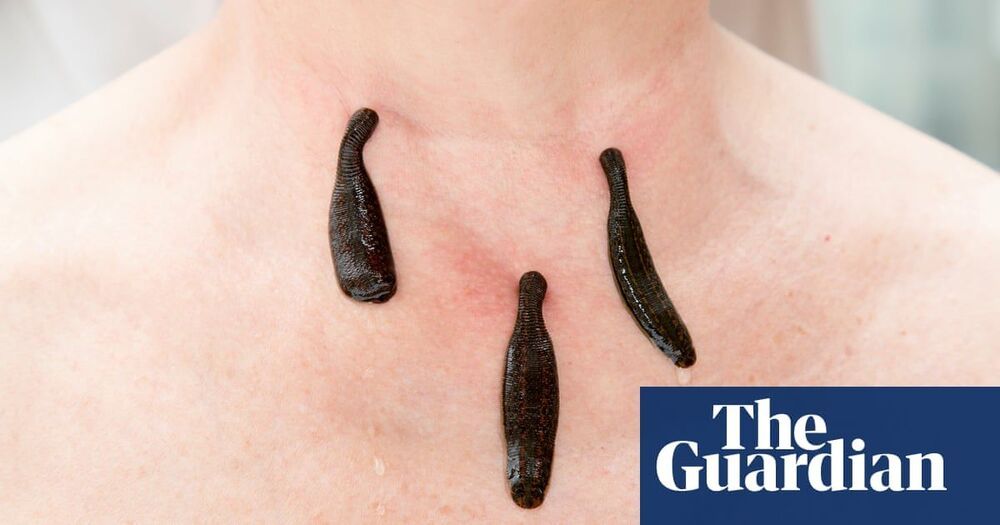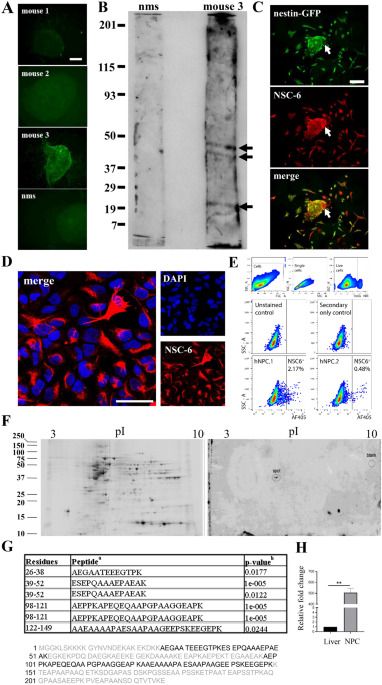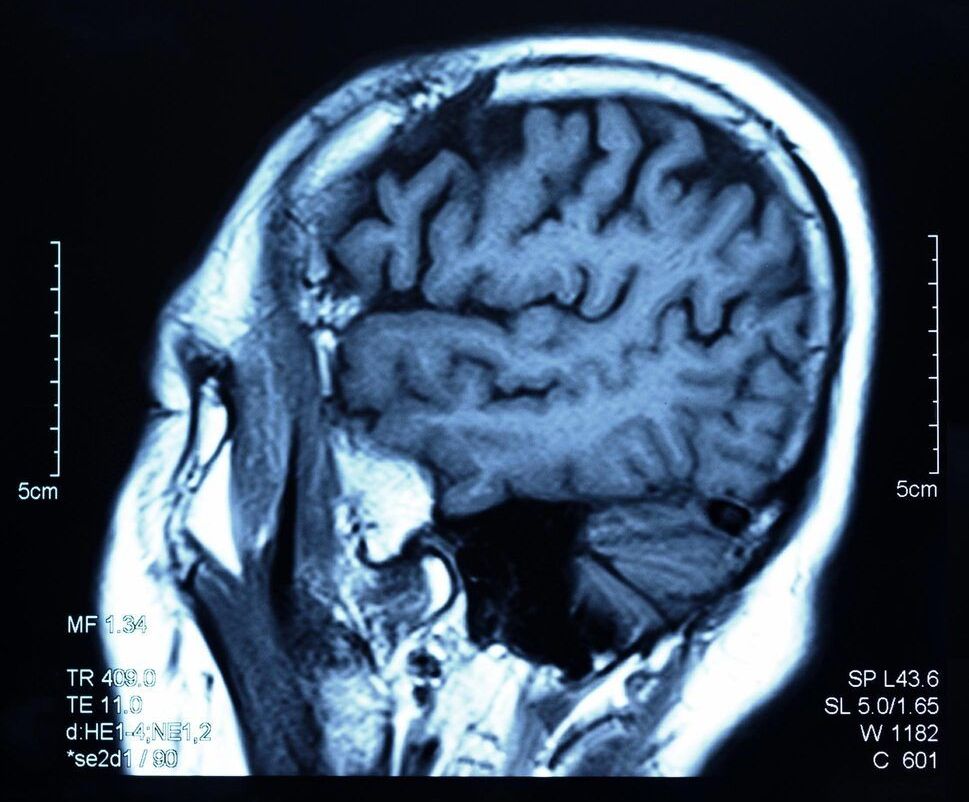O, o circa 2013.
They were once used to treat everything from headaches to strangulation, and leeches are still a vital part of surgery. But how are they farmed?


In this study we aimed to generate mouse antibodies against epitopes found on NPCs. We isolated one antibody (NSC-6) and characterized it in detail. Mass spectrometry using human hippocampal tissue revealed the identity of the recognized antigen as BASP1, a signaling protein that plays a key role in neurite outgrowth and plasticity14,15,16,17,18,19, but here, we demonstrate that it might be utilized as a marker of NSCs in the adult brain.
Similar approaches to developing antibodies against mouse embryonic stem cells have been attempted in the past utilizing mice46,47 and rabbits48. Major drawbacks in mice include immune tolerance to mouse embryonic stem cell surface antigens leading to low antibody production, which could be overcome by immunizing rabbits instead. Regardless of the animal used as a host, a significant number of antibodies are typically generated against intracellular epitopes when animals are immunized with whole cells as was observed in our study.
We found that NSC-6-labeled BASP1 localizes to all radial glia at the E12 stage of brain development, while postnatally, it restricts to the neurogenic areas of the mouse brain but not the cortex. This expression pattern contrasts previous study using DAB-based immunolabeling for NAP-22 (BASP1 alias) in the adult rat brain, which demonstrated robust labeling of cerebral cortex27. While we do not know the basis of this difference in immunolabeling of cortex, possibilities include species variations between rat and mouse expression of BASP1, or differences in epitope recognition between the two antibodies used that could yield distinct patterns of immunoreactivity. Indeed, the two commercial BASP1 polyclonal antibodies did not immunolabel NSCs and in general, exhibited poor staining of the mouse brain tissue.

Researchers at the National Institute of Standards and Technology are proposing a new approach to large-scale artificial intelligence (AI) by relying on the integration of photonic components with superconducting electronics.
Previous approaches to achieving general intelligence in artificial intelligence systems have focused on conventional silicon microelectronics paired with light. There are major barriers to this approach, however. There are many physical and practical limitations with the fabrication of silicon chips with electronic and photonic elements.
General intelligence is “the ability to assimilate knowledge across content categories and to use that information to form a coherent representation of the world.” It involves the integration of various sources of information, and it must result in a coherent and adaptive model of the world. The design and hardware construction for general intelligence requires the application of principles of neuroscience and very-large-scale integration.

Summary: Betaine, a dietary supplement extracted from sweet beets, reduces behavioral symptoms of schizophrenia in mice with genetic risk factors for the disorder. The supplement may help protect proteins that build the cellular skeletons of neurons.
Source: University of Tokyo.
A simple dietary supplement reduces behavioral symptoms in mice with a genetic mutation that causes schizophrenia. After additional experiments, including visualizing the fluorescently stained dancing edge of immature brain cells, researchers concluded that the supplement likely protects proteins that build neurons’ cellular skeletons.


One in 17 people will suffer from a rare disease at some time in their lives. Most of these rare diseases have a genetic cause and often affect children, but proving which gene change causes a disease is a huge challenge.
Scientists have discovered a new genetic disease, which causes some children’s brains to develop abnormally, resulting in delayed intellectual development and often early onset cataracts.
The majority of patients with the condition, which is so new it doesn’t have a name yet, were also microcephalic, a birth defect where a baby’s head is smaller than expected when compared to babies of the same sex and age.
Researchers from the universities of Portsmouth and Southampton found that changes in a gene called coat protein complex 1 (COPB1) caused this rare genetic disease.
Check now if your. TECH is available! ► https://go.tech/Hacksmith.
Use Code Hacksmith. TECH at Checkout for a special 80% OFF on 1 & 5 Year. TECH Domains!
Checkout the circuit diagram on Maker. IO ► https://www.digikey.com/en/maker/projects/the-hacksmith-crys…4695ab007b.
Become a Hacksmith member get exclusive perks! ► https://www.youtube.com/channel/UCjgpFI5dU-D1-kh9H1muoxQ/join.
►Early video access.
►Project design files (solidworks)
►Merch Discounts.
►Collaborate with us on our videos.
Chapters:
0:00 Teaser.
0:16 Quick Sponsor Message.
0:27 Intro.
1:45 Dr. Charles McMuscle Explainer.
5:27 Sponsor Message.
6:12 Body Design.
6:45 Plasma Cutting Body.
7:11 Brain Design.
8:36 Main body Build.
9:32 Final Assembly.
11:56 The Test!
16:56 Project Debrief.
20:05 Outro.
SOCIAL
Website ► http://www.hacksmith.tech.
Facebook ► http://www.facebook.com/thehacksmith.
Instagram ► http://www.instagram.com/thehacksmith.
Twitter ► http://twitter.com/thehacksmith.
Patreon ► http://www.patreon.com/thehacksmith.
Discord ► https://discordapp.com/invite/thehacksmith.
Merch ► https://www.hacksmith.store.
SOFTWARE:

Summary: Boosting the expression of the ABCC1 gene may not only reduce amyloid plaques in the brain, it might also delay the onset of Alzheimer’s disease.
Source: TGen.
Findings of a study by the Translational Genomics Research Institute (TGen), an affiliate of City of Hope, suggest that increasing expression of a gene known as ABCC1 could not only reduce the deposition of a hard plaque in the brain that leads to Alzheimer’s disease, but might also prevent or delay this memory-robbing disease from developing.

In a research paper published in Nature Aging, the team reports using a novel approach to provide the first data-driven classification of multiple diseases obtained using human genetic and medical data freely available from the UK Biobank.
Co-author Professor Linda Partridge (UCL Institute of Health Aging and Max Planck Institute for Biology of Aging) said: Advancing age is the main risk for major diseases, including cancer, dementia, and cardiovascular disease. Understanding the molecular links between the aging process and age-related diseases could allow them to be targeted with drugs to improve late-life health.
The striking finding from the study was that diseases with a similar age of onset were genetically more similar to each other than they were to diseases in the other three clusters.
Papers referenced in the video:
Dietary Thiols: A Potential Supporting Strategy against Oxidative Stress in Heart Failure and Muscular Damage during Sports Activity:
https://www.ncbi.nlm.nih.gov/pmc/articles/PMC7765667/
Ergothioneine levels in an elderly population decrease with age and incidence of cognitive decline; a risk factor for neurodegeneration?
https://pubmed.ncbi.nlm.nih.gov/27444382/
Is ergothioneine a ‘longevity vitamin’ limited in the American diet?
https://www.ncbi.nlm.nih.gov/pmc/articles/PMC7681161/
Frailty markers comprise blood metabolites involved in antioxidation, cognition, and mobility:
https://pubmed.ncbi.nlm.nih.gov/32295884/
Ergothioneine is associated with reduced mortality and decreased risk of cardiovascular disease: